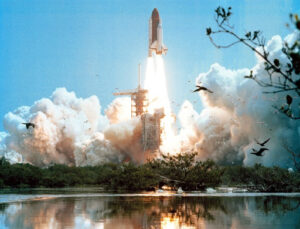The month of May is Asian American and Pacific Islander Heritage Month – a month for celebrating the history and contributions of the 22 million Asian Americans and 1.6 million Native Hawaiian and Pacific Islander Americans currently living in the United States. These groups are often overlooked and lack the visibility they deserve, especially when it comes to recognizing the achievements of those working in STEM fields. A study published in the Proceedings of the Royal Society B even found that less than three percent of scientists featured in the most commonly used biology textbooks were Asian, and none were Native Hawaiian or Pacific Islander (Royal Society). So this May, as we honor the contributions of Asian Americans, Native Hawaiians and Pacific Islanders, let’s take a look at some of the most influential scientists from these underrepresented groups.
1. Min Chueh Chang
Min Chueh Chang, a Chinese American biologist who specialized in reproductive biology, was known for his contributions to in vitro fertilization and the development of the first birth control pill. His work led him to receive numerous awards such as the Albert Lasker Basic Medical Research Award in 1954 and the Ortho Medal and Award in 1961. In 1990, he was elected to the National Academy of Sciences and passed away shortly after in 1991 (embryo.asu).

2. Kalpana Chawla
The first Indian-born woman in space, Kalpana Chawla’s first flight into space occurred in 1997 aboard the Columbia Space Shuttle as a robotic arm operator, using her skills to deploy a satellite called SPARTAN 201, which was meant to study the outer layer of the sun. She passionately wanted young girls in India to have the opportunity of science education and, during her time at NASA, her secondary school participated in NASA’s Summer Space Experience Program, accepting two girls every year to study at the Foundation for International Space Education’s United Space School in Houston. She tragically lost her life in 2003 when the Columbia Space Shuttle disintegrated upon reentry into Earth’s atmosphere (space.com).
3. Roseli Ocampo-Friedmann
The work of Filipino-American microbiologist Roseli Ocampo-Friedmann led scientists to theorize that microorganisms could live in the extreme conditions of Mars. The theory stems from research she did in the 1970’s when she successfully grew samples of bacteria found within frozen rocks from Antarctica. In 1981, she received the National Science Foundation US Congressional Antarctic Service Medal (encyclopedia.com).
4. Peter Tsai
In 1991, a Taiwanese American material scientist named Peter Tsai created an electrocharged fiber that would end up saving countless lives. The fiber that Tsai created is used in the production of N95 face masks, which trap viruses and bacteria, and are used by medical professionals, first-responders, and people all across the world. During the COVID-19 pandemic, N95 masks became instrumental to stopping the spread of the virus (ge.usembassy).

5. Isabella Abbott
Isabella Abbott, sometimes called “the First Lady of Limu,” was a Hawaiian marine botanist known for her research of edible seaweed, called “limu” in Hawaii. From 1960 to 1982, she worked at Stanford’s Hopkins Marine Station, quickly being promoted as a full professor in biology. Her work earned her the National Academy of Sciences’ Gilbert Morgan Smith medal in 1997, the highest award in marine botany.
Recognizing the achievements and contributions of scientists from all different cultures and backgrounds is important to achieving equality and diversity in STEM fields. These examples of exceptional researchers and scientists are just a few in a much larger sea of Asian American, Native Hawaiian and Pacific Islander scientists who have left their mark on the world. So this month, take some time to discover more about the unsung heroes of scientific fields (news.stanford).
Written by: Matthew Jenkins
May 30, 2022
